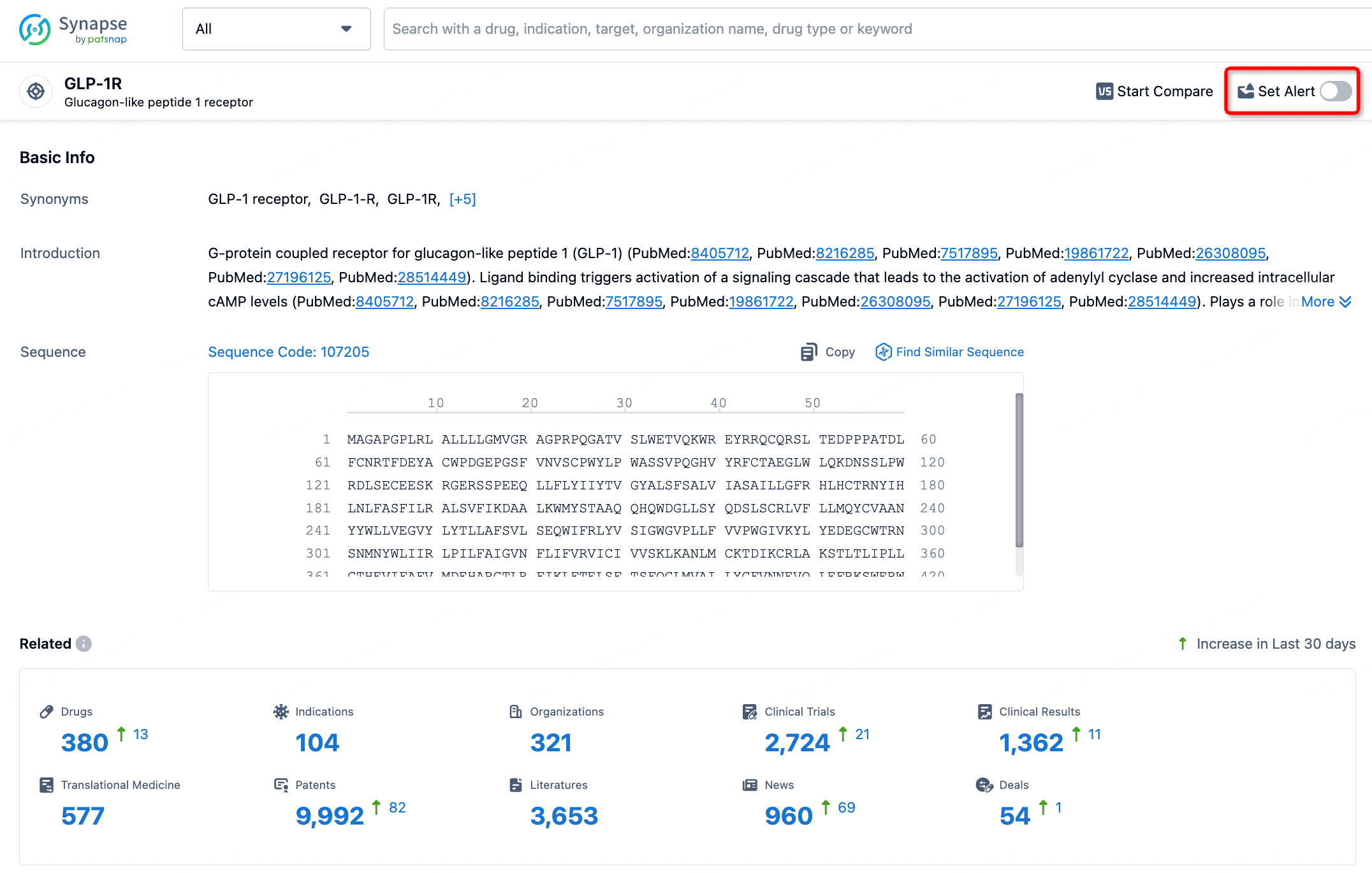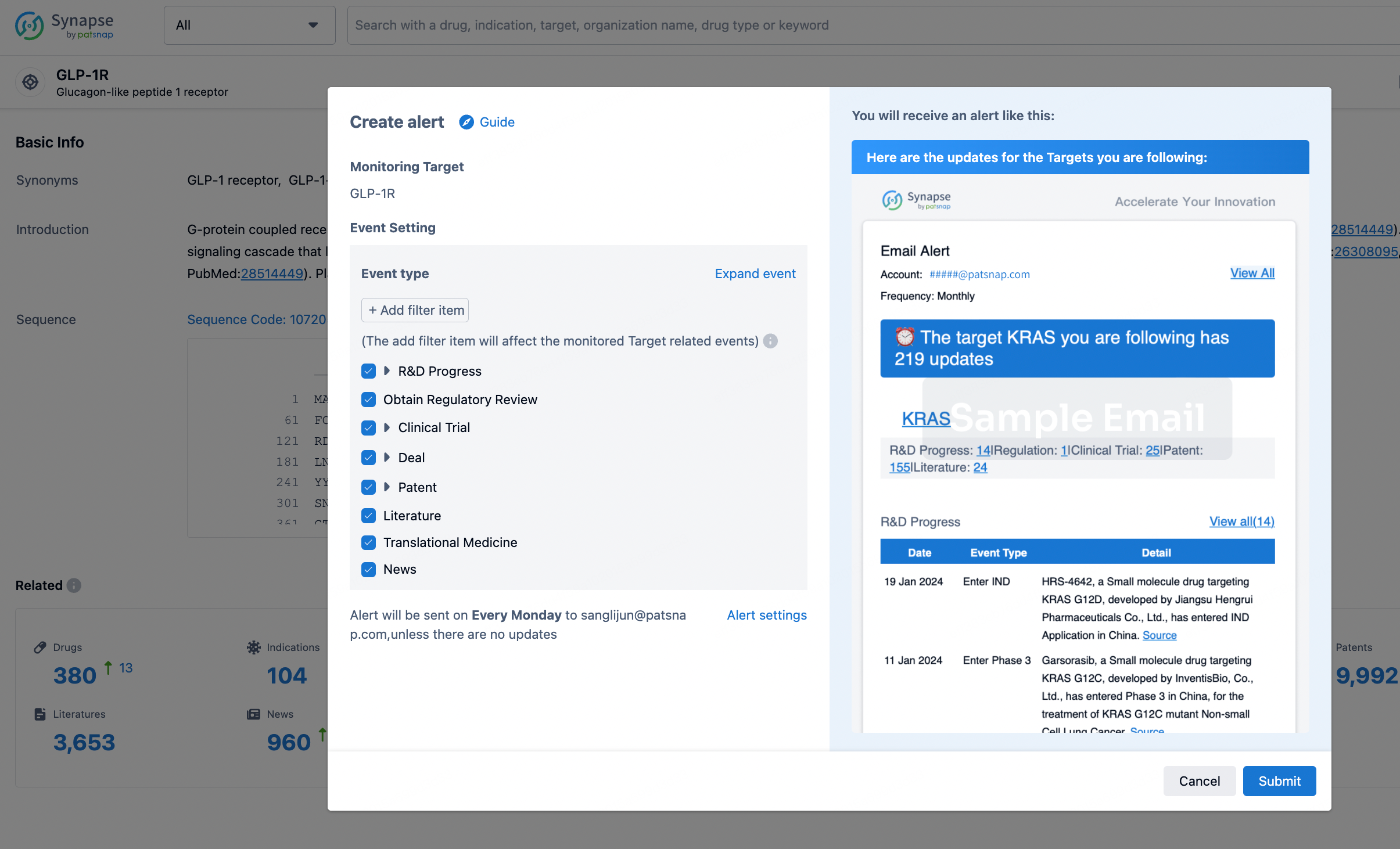Request Demo
What are Proliferation marker protein Ki-67 expression inhibitors and how do they work?
26 June 2024
The study of cell proliferation is a cornerstone in cancer research and treatment. One of the most commonly used biomarkers for cell proliferation is the protein Ki-67. This marker is present during all active phases of the cell cycle but is absent in resting cells, making it a reliable indicator of cell proliferation. Proliferation marker protein Ki-67 expression inhibitors have emerged as a significant area of interest, promising new avenues for cancer therapy and other medical applications.
Proliferation marker protein Ki-67, often referred to simply as Ki-67, is a nuclear protein that is associated with cellular proliferation. It is expressed in all phases of the active cell cycle (G1, S, G2, and M phases) but is notably absent in quiescent cells (G0 phase). This characteristic makes Ki-67 a valuable marker for determining the growth fraction of a given cell population. High levels of Ki-67 expression are typically associated with aggressive tumor growth and poor prognosis in cancer patients.
Ki-67 expression inhibitors are compounds or molecules that specifically target and reduce the expression of Ki-67 in cells. These inhibitors can work through various mechanisms, including transcriptional repression, post-transcriptional modifications, or direct binding to the Ki-67 protein to hinder its function. By downregulating Ki-67 expression, these inhibitors aim to reduce cell proliferation, thereby slowing down the growth of tumors and potentially leading to better clinical outcomes for patients.
The mechanism of action of Ki-67 expression inhibitors can be quite varied. Some inhibitors act at the genetic level by interfering with the transcription factors that control the expression of the Ki-67 gene. For instance, certain small molecules or RNA-based therapies can bind to the promoter regions of the Ki-67 gene, preventing its transcription and subsequent protein production. Other inhibitors may function at the post-transcriptional level by degrading Ki-67 mRNA or interfering with its translation into protein.
Another approach involves the use of antibodies or small molecules that directly bind to the Ki-67 protein, blocking its function and facilitating its degradation. These inhibitors can effectively reduce the amount of functional Ki-67 protein within the cell, thereby impeding cell cycle progression and proliferation. Some inhibitors may also target the cellular pathways that regulate Ki-67 expression, such as the PI3K/AKT or MAPK/ERK signaling pathways, which are often dysregulated in cancer cells.
Proliferation marker protein Ki-67 expression inhibitors have a wide range of applications, particularly in the field of oncology. In cancer treatment, these inhibitors can be used to slow down or halt the growth of tumors by reducing the proliferation of cancer cells. This can be particularly beneficial in aggressive cancers where high Ki-67 levels are correlated with rapid tumor growth and poor prognosis. By lowering Ki-67 expression, these inhibitors can potentially improve the effectiveness of existing treatments, such as chemotherapy and radiotherapy, by making cancer cells more susceptible to these interventions.
In addition to their use in cancer therapy, Ki-67 expression inhibitors have potential applications in other medical conditions characterized by abnormal cell proliferation. For example, they could be used to treat certain autoimmune diseases where uncontrolled cell proliferation contributes to disease progression. Moreover, these inhibitors could be valuable in regenerative medicine, where controlling cell proliferation is crucial for tissue engineering and the development of new therapies for degenerative diseases.
In conclusion, proliferation marker protein Ki-67 expression inhibitors represent a promising class of therapeutic agents with the potential to revolutionize cancer treatment and other medical fields. By specifically targeting and reducing Ki-67 expression, these inhibitors can effectively control cell proliferation, offering new hope for patients with aggressive tumors and other proliferative disorders. As research in this area continues to advance, we can expect to see further developments and clinical applications of these innovative inhibitors.
Proliferation marker protein Ki-67, often referred to simply as Ki-67, is a nuclear protein that is associated with cellular proliferation. It is expressed in all phases of the active cell cycle (G1, S, G2, and M phases) but is notably absent in quiescent cells (G0 phase). This characteristic makes Ki-67 a valuable marker for determining the growth fraction of a given cell population. High levels of Ki-67 expression are typically associated with aggressive tumor growth and poor prognosis in cancer patients.
Ki-67 expression inhibitors are compounds or molecules that specifically target and reduce the expression of Ki-67 in cells. These inhibitors can work through various mechanisms, including transcriptional repression, post-transcriptional modifications, or direct binding to the Ki-67 protein to hinder its function. By downregulating Ki-67 expression, these inhibitors aim to reduce cell proliferation, thereby slowing down the growth of tumors and potentially leading to better clinical outcomes for patients.
The mechanism of action of Ki-67 expression inhibitors can be quite varied. Some inhibitors act at the genetic level by interfering with the transcription factors that control the expression of the Ki-67 gene. For instance, certain small molecules or RNA-based therapies can bind to the promoter regions of the Ki-67 gene, preventing its transcription and subsequent protein production. Other inhibitors may function at the post-transcriptional level by degrading Ki-67 mRNA or interfering with its translation into protein.
Another approach involves the use of antibodies or small molecules that directly bind to the Ki-67 protein, blocking its function and facilitating its degradation. These inhibitors can effectively reduce the amount of functional Ki-67 protein within the cell, thereby impeding cell cycle progression and proliferation. Some inhibitors may also target the cellular pathways that regulate Ki-67 expression, such as the PI3K/AKT or MAPK/ERK signaling pathways, which are often dysregulated in cancer cells.
Proliferation marker protein Ki-67 expression inhibitors have a wide range of applications, particularly in the field of oncology. In cancer treatment, these inhibitors can be used to slow down or halt the growth of tumors by reducing the proliferation of cancer cells. This can be particularly beneficial in aggressive cancers where high Ki-67 levels are correlated with rapid tumor growth and poor prognosis. By lowering Ki-67 expression, these inhibitors can potentially improve the effectiveness of existing treatments, such as chemotherapy and radiotherapy, by making cancer cells more susceptible to these interventions.
In addition to their use in cancer therapy, Ki-67 expression inhibitors have potential applications in other medical conditions characterized by abnormal cell proliferation. For example, they could be used to treat certain autoimmune diseases where uncontrolled cell proliferation contributes to disease progression. Moreover, these inhibitors could be valuable in regenerative medicine, where controlling cell proliferation is crucial for tissue engineering and the development of new therapies for degenerative diseases.
In conclusion, proliferation marker protein Ki-67 expression inhibitors represent a promising class of therapeutic agents with the potential to revolutionize cancer treatment and other medical fields. By specifically targeting and reducing Ki-67 expression, these inhibitors can effectively control cell proliferation, offering new hope for patients with aggressive tumors and other proliferative disorders. As research in this area continues to advance, we can expect to see further developments and clinical applications of these innovative inhibitors.
How to obtain the latest development progress of all targets?
In the Synapse database, you can stay updated on the latest research and development advances of all targets. This service is accessible anytime and anywhere, with updates available daily or weekly. Use the "Set Alert" function to stay informed. Click on the image below to embark on a brand new journey of drug discovery!
AI Agents Built for Biopharma Breakthroughs
Accelerate discovery. Empower decisions. Transform outcomes.
Get started for free today!
Accelerate Strategic R&D decision making with Synapse, PatSnap’s AI-powered Connected Innovation Intelligence Platform Built for Life Sciences Professionals.
Start your data trial now!
Synapse data is also accessible to external entities via APIs or data packages. Empower better decisions with the latest in pharmaceutical intelligence.


